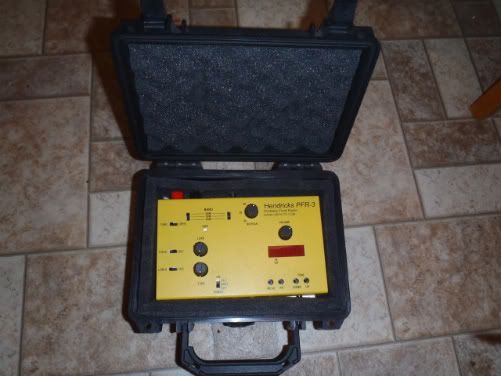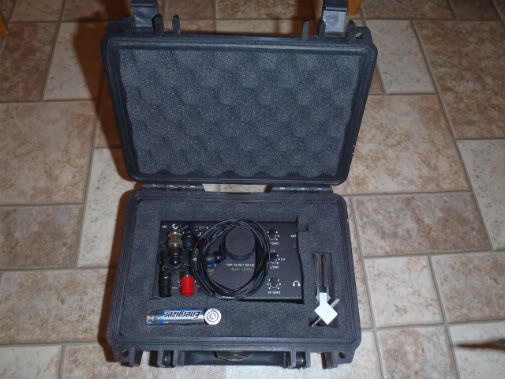Each portable op has been a lesson for me in gear load out, power sources, antennas etc. I have tried to streamline my load out to facilitate ease of setup. I have learned that a good understanding of antennas is a must to give you an idea of the options available to you both at home and in the field. Conversely, there is a big difference between ideal and compromise. Typically the more requirements you place on a particular antenna the less ideal and more of a compromise it becomes. Weight, size (bulk), Disassemble/Assemble (Dis/Ass) time and multi-band operation are all factors that can cause a compromise to your antenna. I don't know a portable operator that doesn't factor all of these things into their equation.
My antenna is based primarily on it's single greatest attribute. Speed of dis/ass. It is nothing more than two wires fed directly at the TRX. The radiator is 34' and I deploy it as vertical as possible. The counterpoise is 31' and I lay it on the ground at a 90 degree angle or as close to that angle as possible to the radiator. The two ends that connect to the TRX have male banana plugs from Radio Shack that I soldered to the wire. The wire is from The Wireman. I don't remember the size or name, but it is 24 or 26 gauge and very strong. The insulators are nothing more than tape bridals made out of electrical tape.
To erect the antenna I use cheap, light weight rope on a flat spool. I use a plastic water bottle with a slip knot around the neck and the Armstrong Method to launch the rope over a tree branch. Once the bottle is chest level I take it off and connect the antenna. I then raise the antenna, wind the excess rope and stash the spool out of the way near the tree. Setup and on the air is less than 5 minutes.
This particular antenna fits my needs and consistently yields good results for the three bands I operate portable. 40, 30 and 20 meters. Keep in mind that both of these transceivers have a built in ATU. SWR for each band after tuning with both transceivers are as follows.
40: 1:1
30: 1:1
20: 1:2
This leads me to my final point which is that I get good reports and lots of questions about the antenna. I am not naive in that I know that I did not "create" this antenna. I used openly available information from the Internet and ARRL books to help me build my antenna. There are many antennas that are much more "ideal" but they do not offer the ease and simplicity that I needed. Who says compromise isn't a good thing?
All of my gear minus the rope and water bottle fits in a Pelican case. Model 1120 for the KX-1 and 1150 for the PFR-3. These are small cases if you have not seen them before. Not too shabby considering the load out is a TRX, paddle, head phone (ear buds), log, pencil, antenna and spare batteries.


I hope this information is beneficial and helps you in your portable operations. Best of luck and hope to work you soon.
72,
Steve




No comments:
Post a Comment